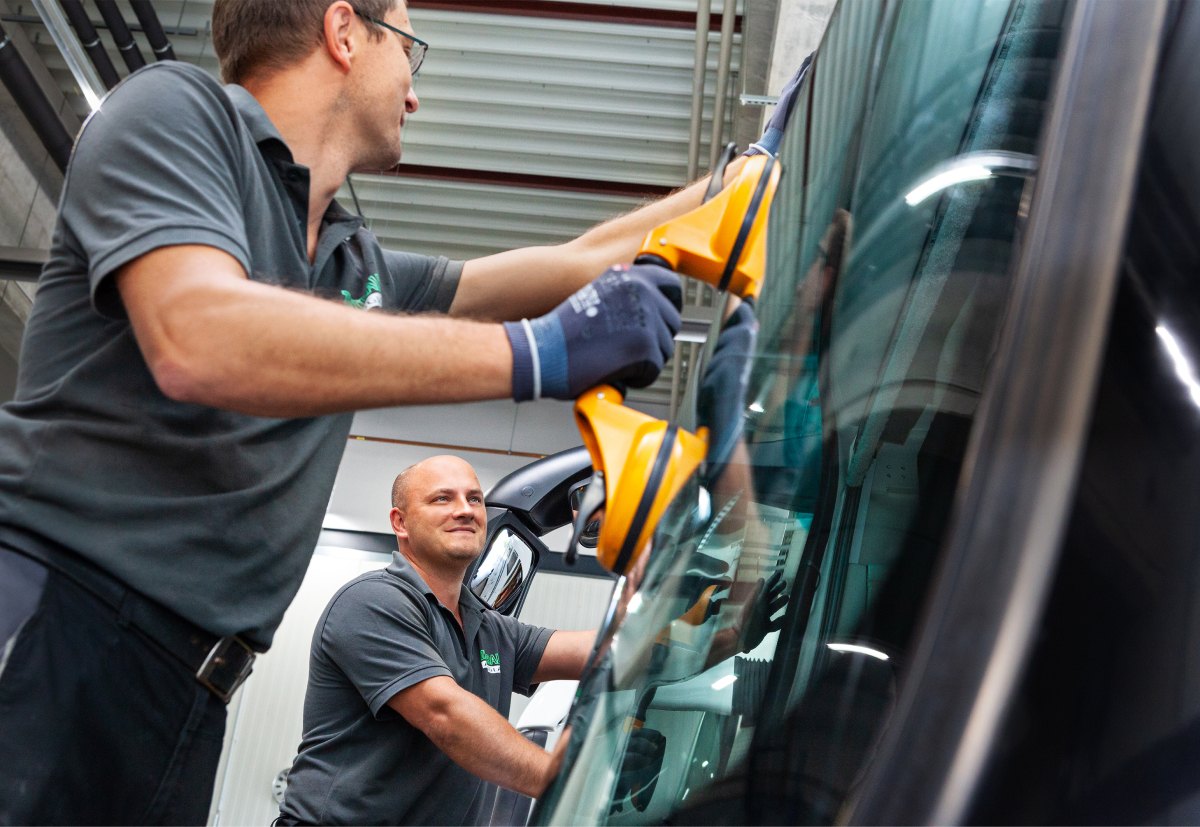Circularity & Lifecycle
The phases of a windshield replacement
The lifecycle of a windshield can be divided in to four phases, all included in our total estimated carbon footprint per windshield; manufacturing, transport to our workshops, fitting on the car and recycling of the broken glass.

Manufacturing
The manufacturing of car glass begins in float plants using the following raw materials: sand (~73%), soda Ash (~13%), limestone (~9%), dolomite (~4%), other trace materials (~1%) (1)
From the float plants, the glass is transported to and processed in various plants. The windscreens and laminated side lights are constructed using the above glass combined with PVB. Following toughening or laminating of the glass, various attachments are added for fifitting to the vehicle and/or vehicle functionality, example housing clips, mirror attachments, ADAS brackets and so on.
Based on calculations performed by our largest suppliers of glass, we estimate the carbon footprint of manufacturing a windscreen to be about 38.5 kg C02/windshield (1,2m2).
(1) NSG Group, 2021
Transport
The manufactured windscreens are transported from the manufacturing plants to our workshops in the Nordics. In the Nordics, Cary group does not store any glass articles. Instead they are ordered and delivered (JIT) to our workshops the day before they are used.
These transports are performed by our glass suppliers and in some cases their local supplier of transports. Based on their calculations, the carbon footprint from transportation is estimated to be 3kg C02 per windshield (2).
(2) Saint Gobain/Autover, Pilkington
Fitting
The main material used for replacing a windshield is glue. During a replacement we mainly use two kind of tools, cutting tolls and a glue gun – both being electrical. A windscreen replacement takes about two hours and includes cutting out the broken glass, cleaning the frame of the car, adding glue and fifitting the new windshield. On many of today’s cars, we also handle the electronics in the windshield such as lane assistants and rain sensors, which often need calibrating. We strive for all our workshops to run solely on green electricity, originating from carbon free power sources such as wind and hydroelectric.
Based on calculations we estimate the average carbon footprint of fifitting a windshield to be about 2 kg C02 per replacement (3)
(3) Based on electricity consumed and the carbon footprint of the materials used.
Handling of used glass
When the windscreen replacement is complete, all broken glass is transported for recycling. Currently, about 90% of the materials from the broken glass can be recycled – mostly becoming insulation products for the construction industry.
Based on calculations we estimate the average carbon footprint of transporting the windshield to recycling to be about 0.6 kg C02 per replacement (4)
(4) Based on fuel consumption data from our suppliers
To read more about the recycling process, click here!
Compensation margin
When compensating for the carbon footprint of our services, it is important that we make sure all the emissions are covered. In order to make sure of this we always use an extra 10% margin when compensating.

